Abstract
1. Intravenous injection of [3H]progesterone in non-pregnant monkeys resulted in total disappearance of the labelled hormone from the circulation within 3 h. However, 0.5-1.75 h after disappearance the hormone reappeared, reaching 20% (median, 5%) of the initial maximal concentration. 2. Reappearance of labelled hormone was accompanied by similar fluctuations in the levels of labelled metabolites, [3H]20 alpha-dihydroprogesterone and [3H]17 alpha-hydroxyprogesterone, which reached 61% (median, 14%) and 120% (median, 13%), respectively, of the initial maximal concentrations. 3. Chromatography was used to separate labelled progesterone and its metabolites. Efficiency of the procedure was determined separately in each sample and for each steroid. All data were corrected for percentage recovery. 4. Analytical equations were devised, based on the theory of compartmental systems with continuously distributed time lags, to describe the unexpected kinetics of progesterone levels. The coefficients of determination ranged from 86 to 99% (median, 96%) which indicates that the equations enabled reliable prediction of hormone levels in blood within the time range studied. 5. The unexpected reappearance of labelled progesterone cannot be explained by hormone secretion but only by a delayed release from tissue stores, since progesterone does not undergo enterohepatic recirculation. Thus, a previously undescribed mechanism affecting circulating progesterone levels, and perhaps those of other hormones, exists.
Full text
PDF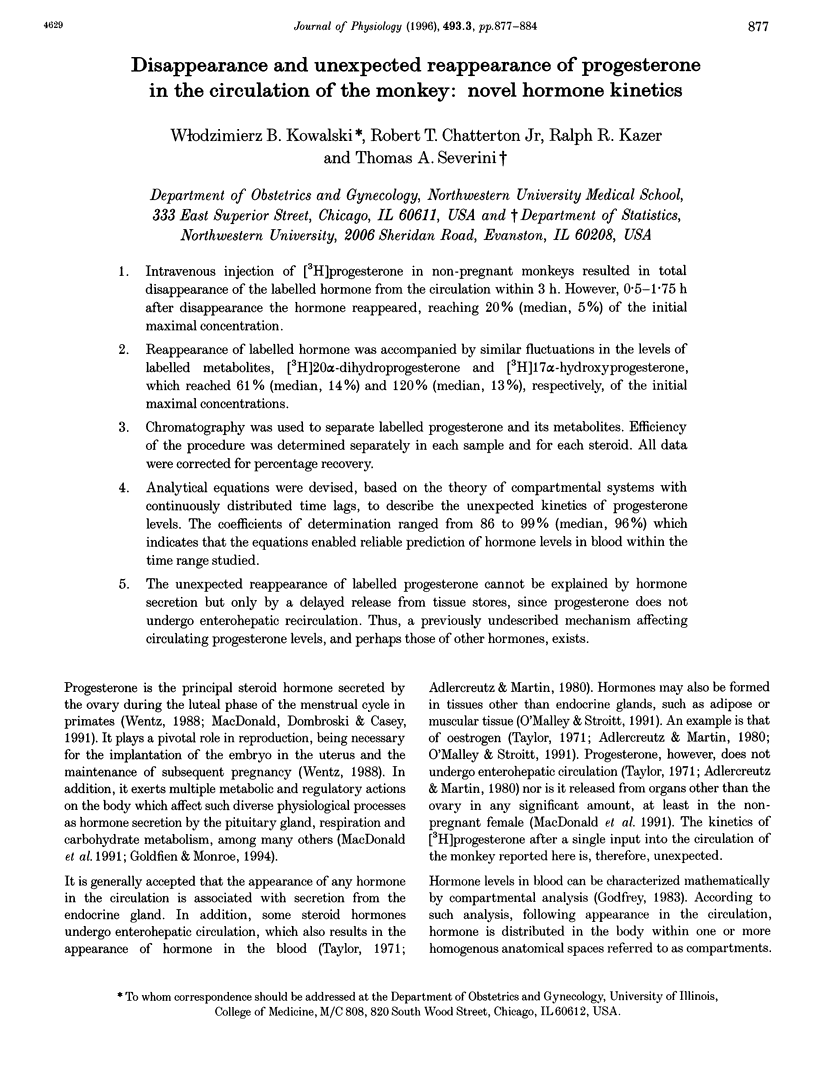
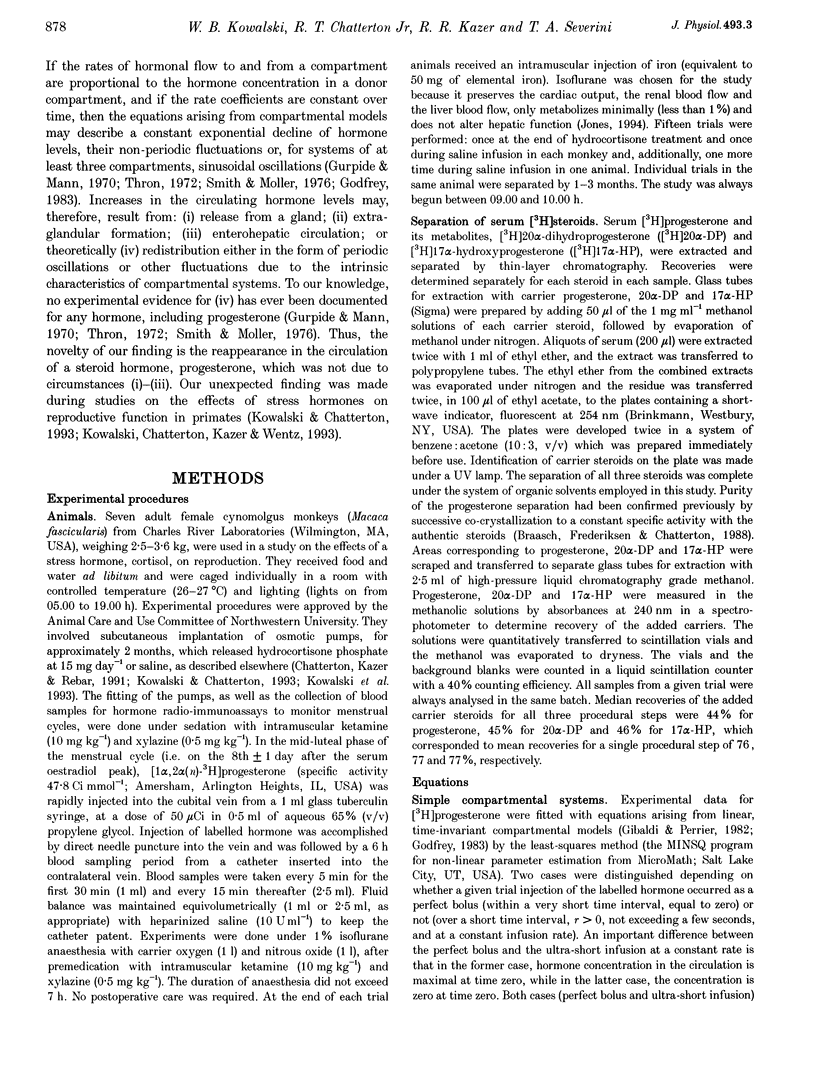
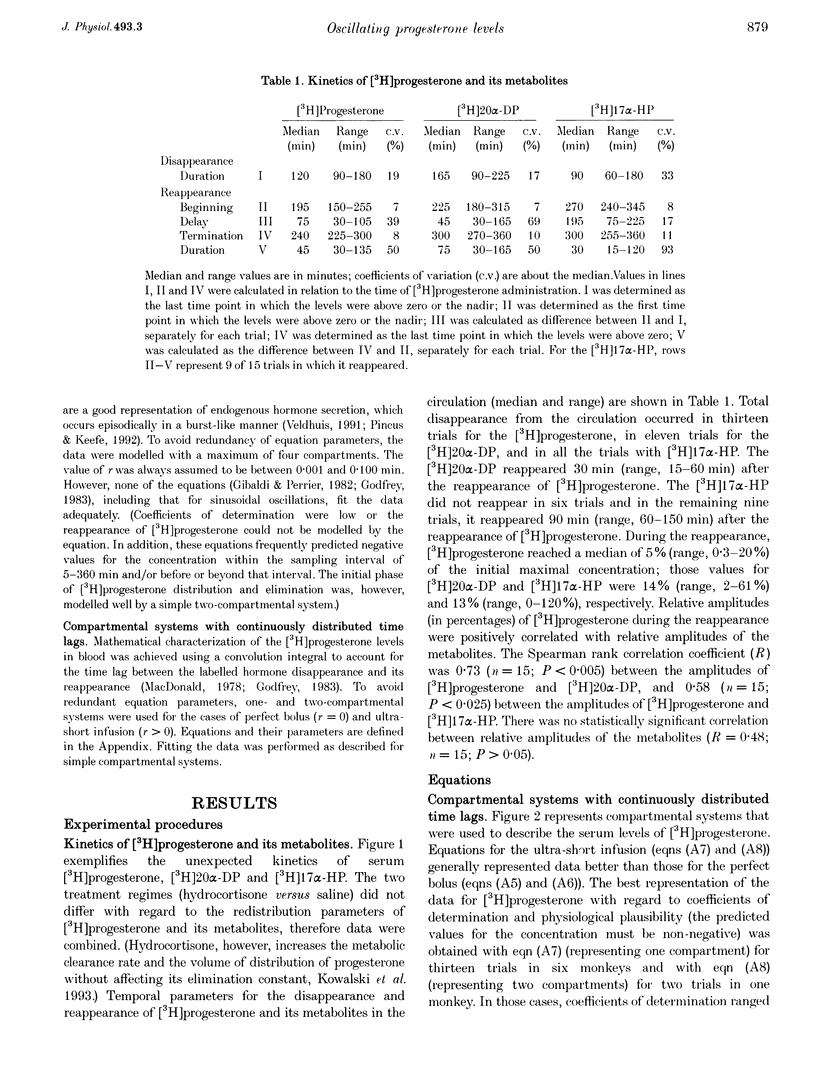
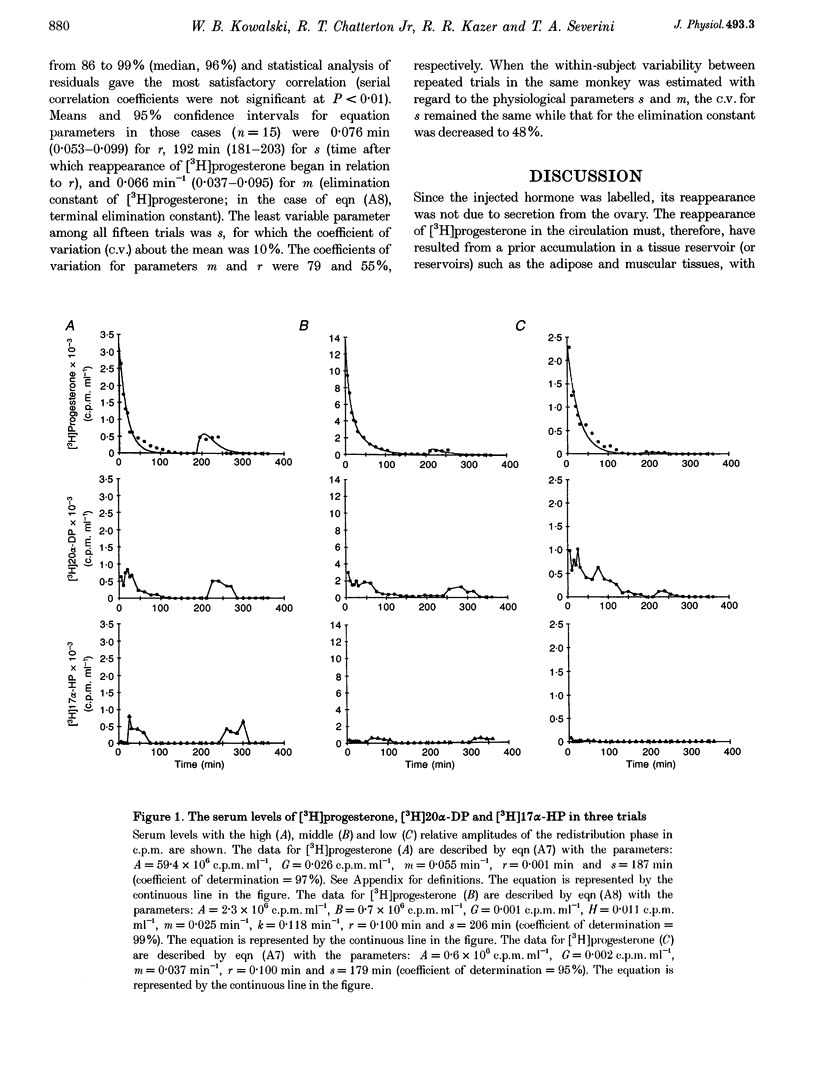
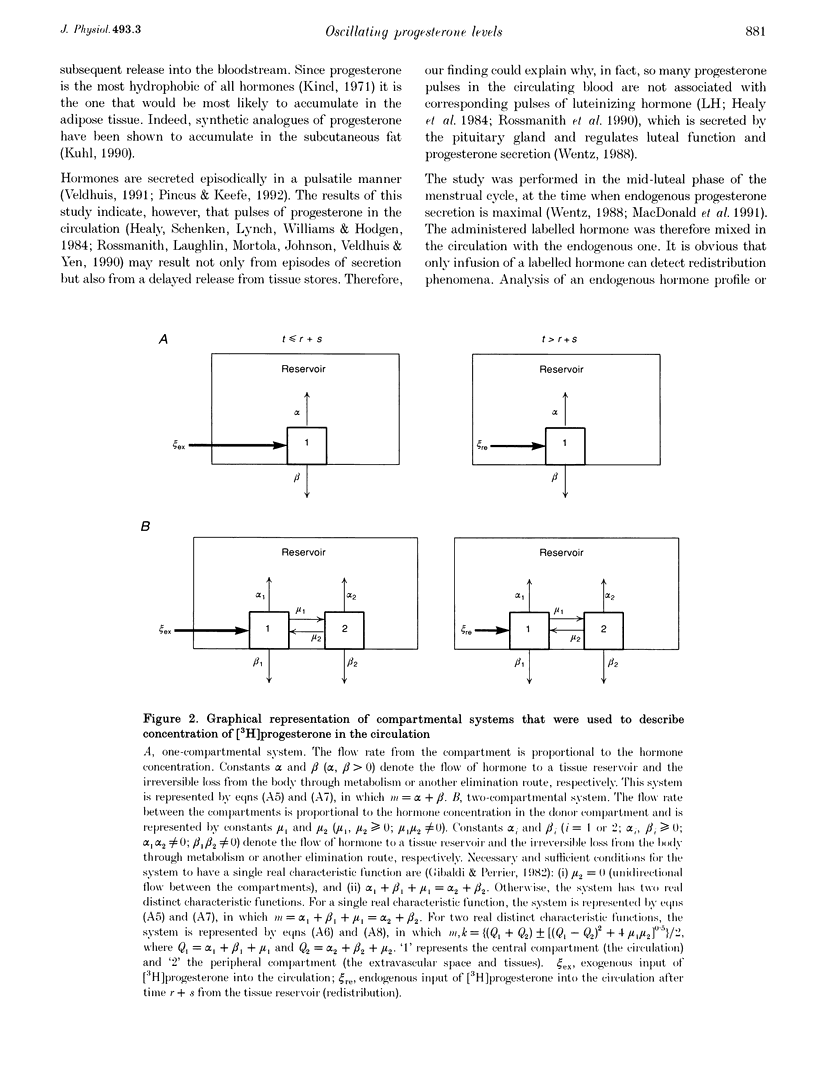
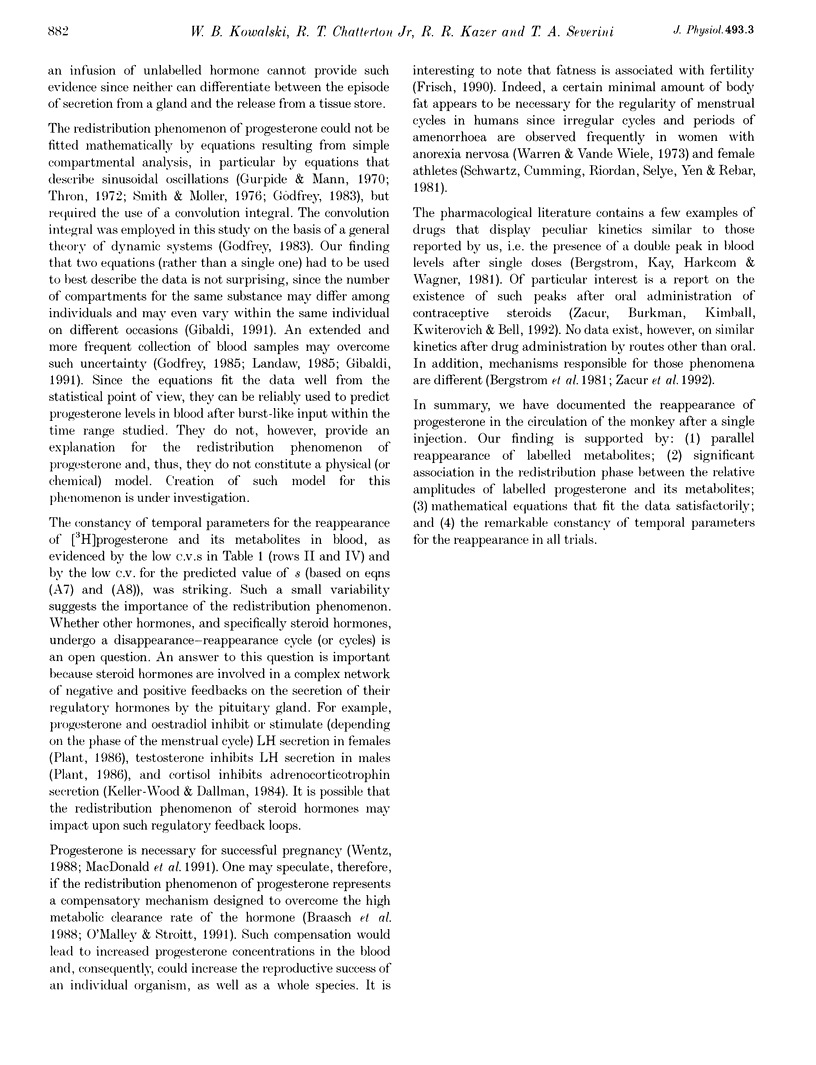
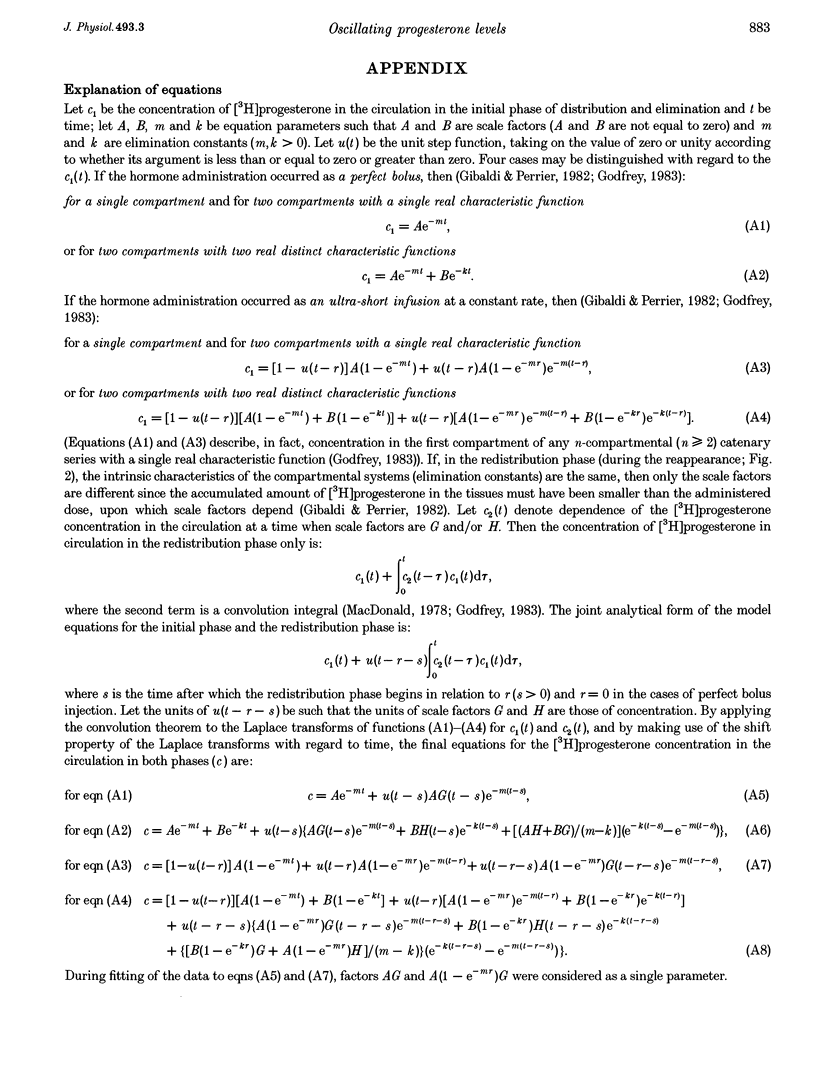
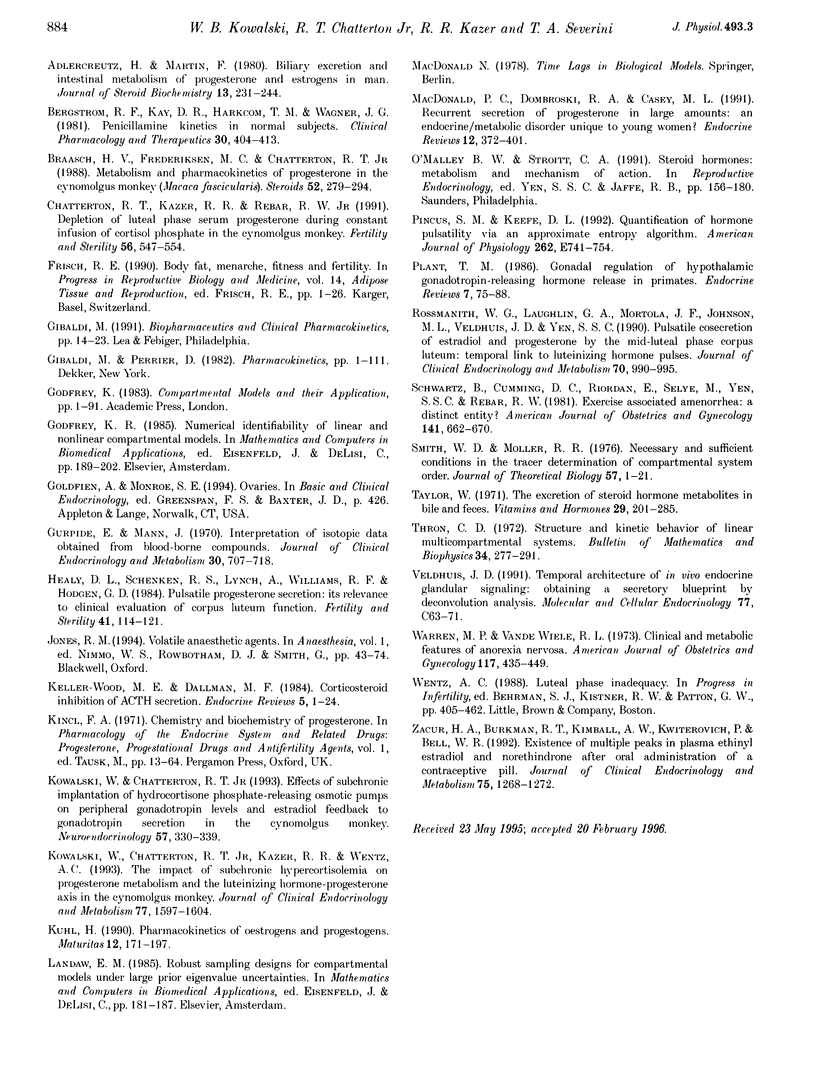
Selected References
These references are in PubMed. This may not be the complete list of references from this article.
- Adlercreutz H., Martin F. Biliary excretion and intestinal metabolism of progesterone and estrogens in man. J Steroid Biochem. 1980 Feb;13(2):231–244. doi: 10.1016/0022-4731(80)90196-x. [DOI] [PubMed] [Google Scholar]
- Braasch H. V., Frederiksen M. C., Chatterton R. T., Jr Metabolism and pharmacokinetics of progesterone in the cynomolgus monkey (Macaca fascicularis). Steroids. 1988 Sep;52(3):279–294. doi: 10.1016/0039-128x(88)90009-8. [DOI] [PubMed] [Google Scholar]
- Chatterton R. T., Jr, Kazer R. R., Rebar R. W. Depletion of luteal phase serum progesterone during constant infusion of cortisol phosphate in the cynomolgus monkey. Fertil Steril. 1991 Sep;56(3):547–554. [PubMed] [Google Scholar]
- Gurpide E., Mann J. Interpretation of isotopic data obtained from blood-borne compounds. J Clin Endocrinol Metab. 1970 Jun;30(6):707–718. doi: 10.1210/jcem-30-6-707. [DOI] [PubMed] [Google Scholar]
- Healy D. L., Schenken R. S., Lynch A., Williams R. F., Hodgen G. D. Pulsatile progesterone secretion: its relevance to clinical evaluation of corpus luteum function. Fertil Steril. 1984 Jan;41(1):114–121. doi: 10.1016/s0015-0282(16)47551-5. [DOI] [PubMed] [Google Scholar]
- Keller-Wood M. E., Dallman M. F. Corticosteroid inhibition of ACTH secretion. Endocr Rev. 1984 Winter;5(1):1–24. doi: 10.1210/edrv-5-1-1. [DOI] [PubMed] [Google Scholar]
- Kowalski W., Chatterton R. T., Jr Effects of subchronic implantation of hydrocortisone phosphate-releasing osmotic pumps on peripheral gonadotropin levels and estradiol feedback to gonadotropin secretion in the cynomolgus monkey. Neuroendocrinology. 1993;57(2):330–339. doi: 10.1159/000126376. [DOI] [PubMed] [Google Scholar]
- Kowalski W., Chatterton R. T., Jr, Kazer R. R., Wentz A. C. The impact of subchronic hypercortisolemia on progesterone metabolism and the luteinizing hormone-progesterone axis in the cynomolgus monkey. J Clin Endocrinol Metab. 1993 Dec;77(6):1597–1604. doi: 10.1210/jcem.77.6.8263147. [DOI] [PubMed] [Google Scholar]
- MacDonald P. C., Dombroski R. A., Casey M. L. Recurrent secretion of progesterone in large amounts: an endocrine/metabolic disorder unique to young women? Endocr Rev. 1991 Nov;12(4):372–401. doi: 10.1210/edrv-12-4-372. [DOI] [PubMed] [Google Scholar]
- Plant T. M. Gonadal regulation of hypothalamic gonadotropin-releasing hormone release in primates. Endocr Rev. 1986 Feb;7(1):75–88. doi: 10.1210/edrv-7-1-75. [DOI] [PubMed] [Google Scholar]
- Rossmanith W. G., Laughlin G. A., Mortola J. F., Johnson M. L., Veldhuis J. D., Yen S. S. Pulsatile cosecretion of estradiol and progesterone by the midluteal phase corpus luteum: temporal link to luteinizing hormone pulses. J Clin Endocrinol Metab. 1990 Apr;70(4):990–995. doi: 10.1210/jcem-70-4-990. [DOI] [PubMed] [Google Scholar]
- Schwartz B., Cumming D. C., Riordan E., Selye M., Yen S. S., Rebar R. W. Exercise-associated amenorrhea: a distinct entity? Am J Obstet Gynecol. 1981 Nov 15;141(6):662–670. doi: 10.1016/s0002-9378(15)33308-1. [DOI] [PubMed] [Google Scholar]
- Taylor W. The excretion of steroid hormone metabolites in bile and feces. Vitam Horm. 1971;29:201–285. doi: 10.1016/s0083-6729(08)60050-3. [DOI] [PubMed] [Google Scholar]
- Thron C. D. Structure and kinetic behavior of linear multicompartment systems. Bull Math Biophys. 1972 Jun;34(2):277–291. doi: 10.1007/BF02476521. [DOI] [PubMed] [Google Scholar]
- Zacur H. A., Burkman R. T., Kimball A. W., Kwiterovich P., Bell W. R. Existence of multiple peaks in plasma ethinyl estradiol and norethindrone after oral administration of a contraceptive pill. J Clin Endocrinol Metab. 1992 Nov;75(5):1268–1272. doi: 10.1210/jcem.75.5.1430087. [DOI] [PubMed] [Google Scholar]


